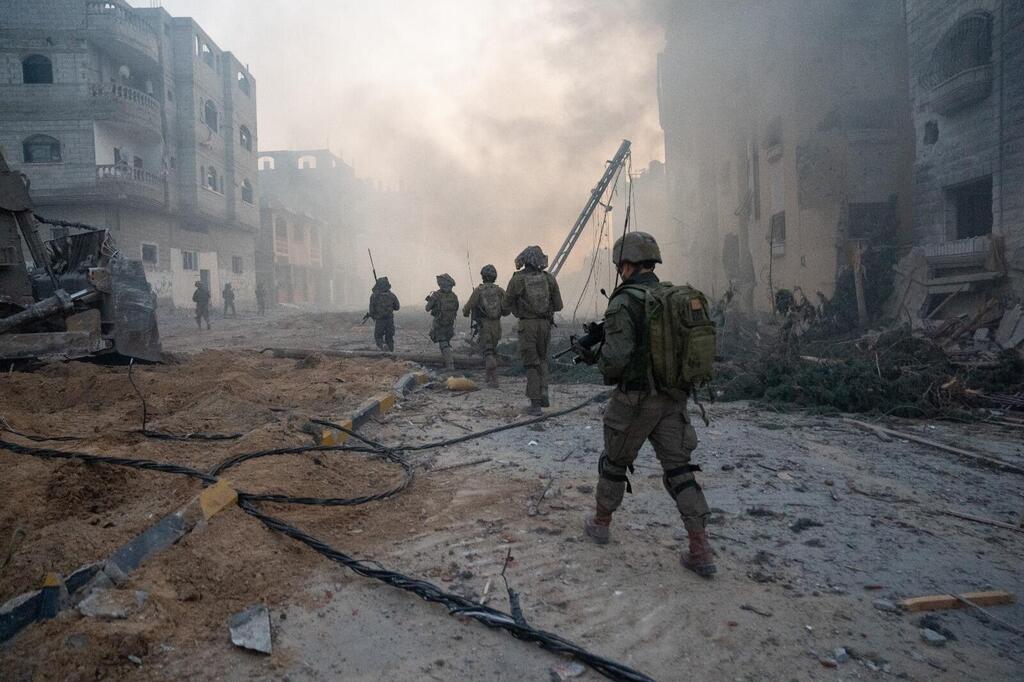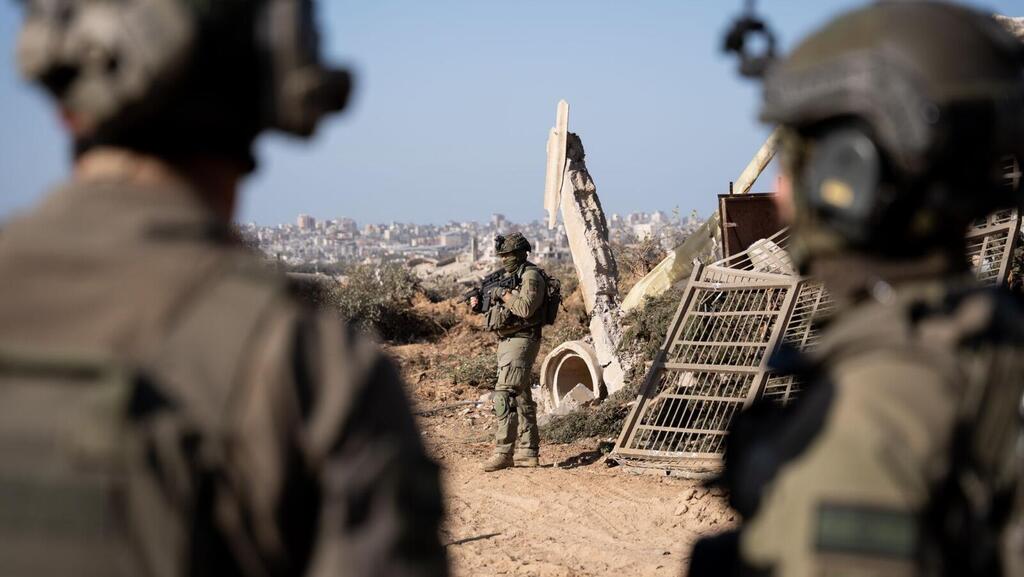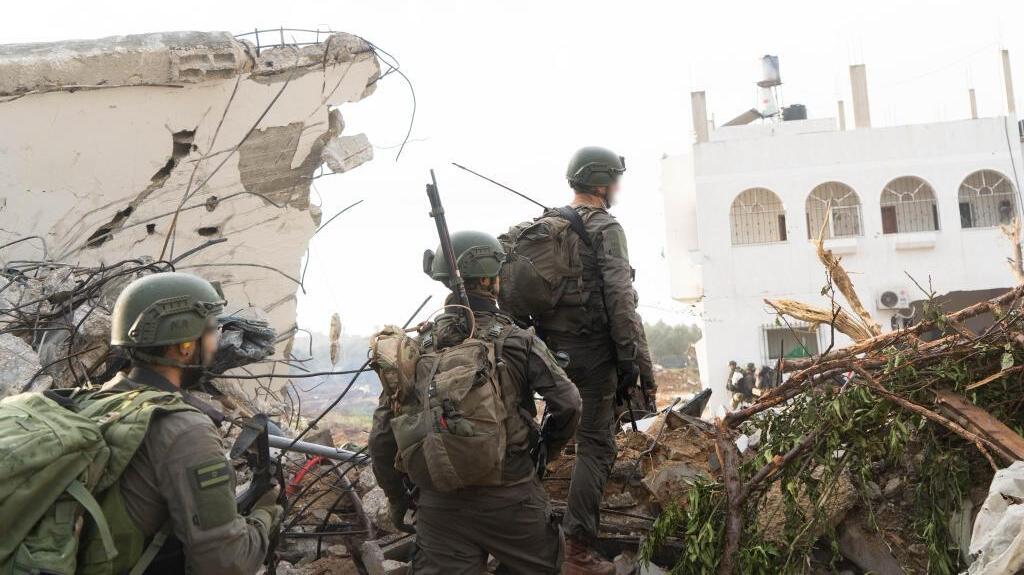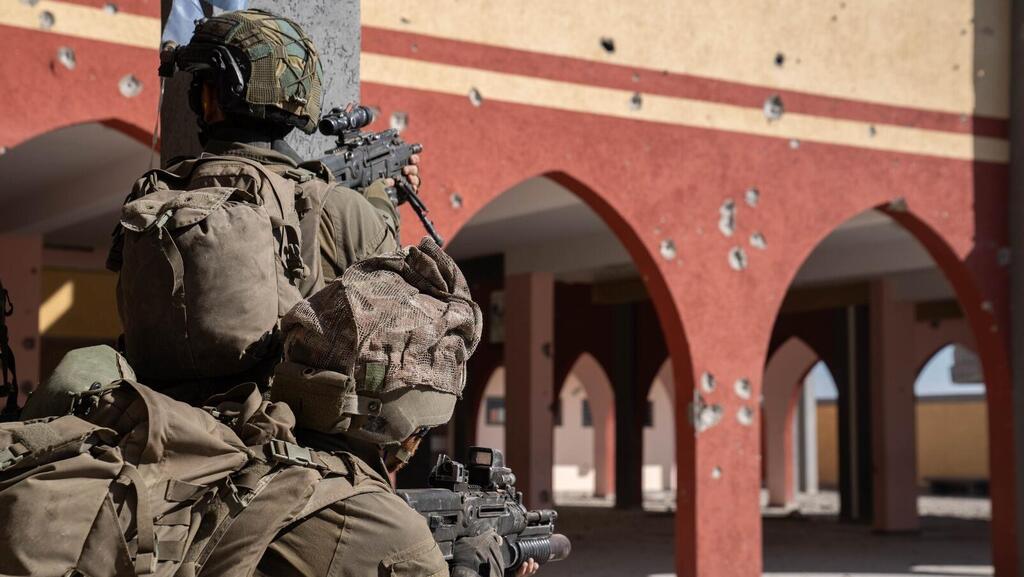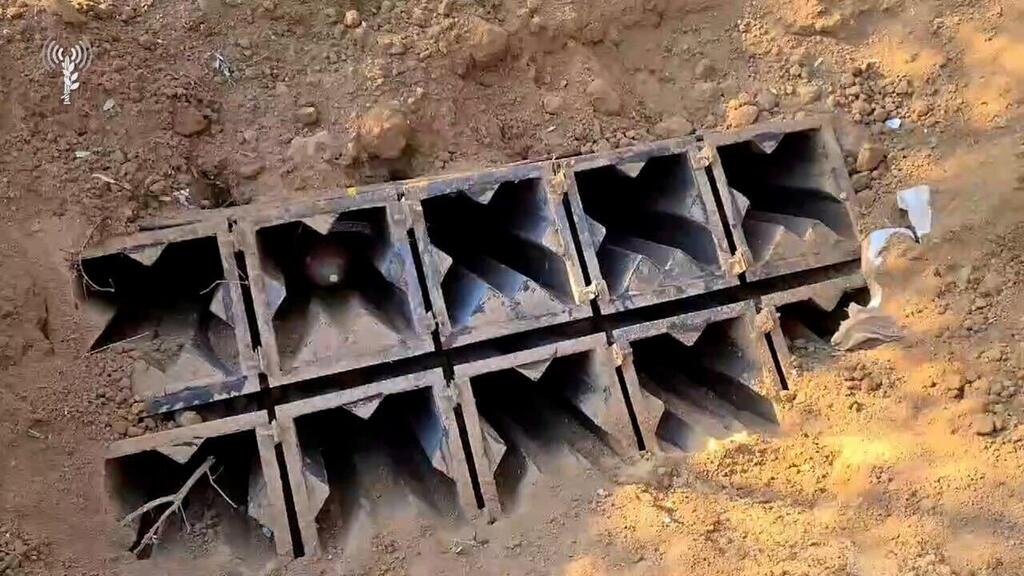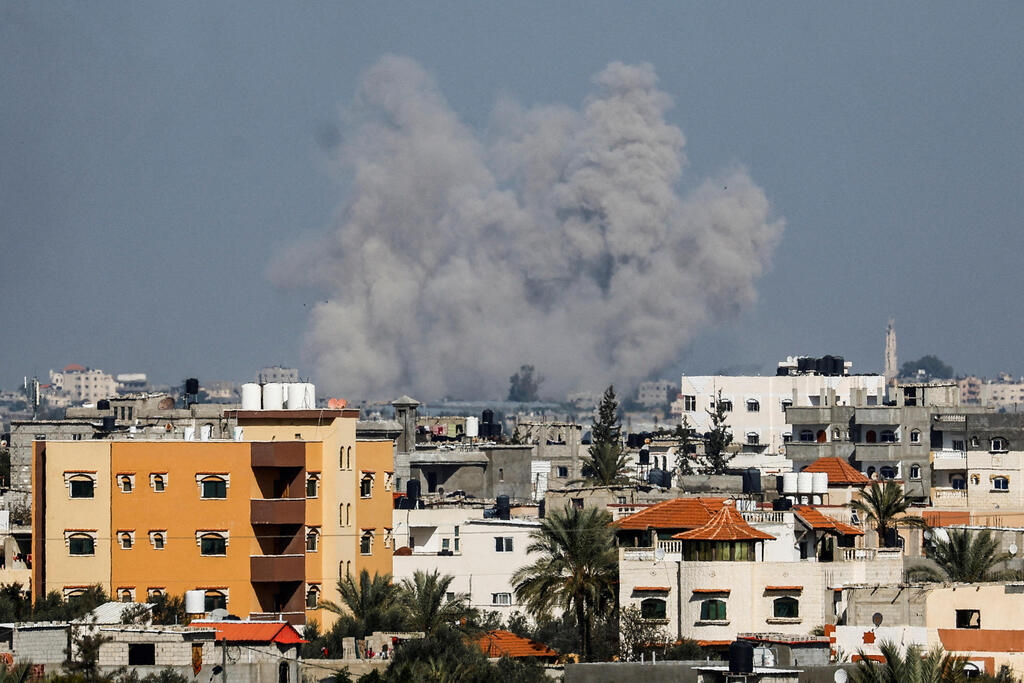Getting your Trinity Audio player ready...
While the government’s plans for post-war Gaza remain unclear, the reality on the ground is evolving into a certain state of stasis. The IDF has initiated the ground operation’s third stage, expected to be longer than its predecessors.
More stories:
As it appears in recent days, forces are getting used to the idea of taking control over parts of the Strip, mostly seen with the military’s mission of holding the Netzarim Corridor, stretching about eight or nine kilometers from the Israeli border near Kibbutz Be’eri to the Gazan coastline.
The Netzarim Corridor’s width ranges from one to one-and-a-half kilometers, between Gaza City’s southern neighborhoods and the northern outskirts of central Gaza towns. The role of the IDF’s divisions there is to keep the Strip divided from north to south and thereby prevent the return of around a million Gaza residents to the northern part of the Strip.
This isn’t a standard operational task such as those carried out by the 98th Division in Khan Younis - the only division actively operating in the Strip, but a mission that involves holding ground: statically controlling the area that the IDF has captured, with operational tasks including raids and patrols, in order to prevent the enemy population from returning to Gaza City and the nearby towns.
In these areas, according to military estimates, about 150,000 Gazans remain who haven't evacuated south, and some have already come out of UNRWA shelters at the start of the IDF's arrival – with the opening of the market in Jabaliya, and treatment in hospitals that are still active. The main authoritative factor they encounter up close is what remains of Hamas' mechanism in the north, with armed terrorists accompanying civilians.
War as routine
The terminology in the Netzarim Corridor best shows the freeze of the war in Gaza with no positive outlook. Conscripted soldiers who are supposed to take over the mission these days, instead of two reserve divisions that performed it in the past month, call it “holding a line for one to two months,” in a similar way to operational activities in the West Bank or the Gaza border.
The 99th Reserve Brigade, which carried out the mission at the Netzarim Corridor last month, has already defined the temporary military constructions along the route as outposts, and the IDF checkpoints as "roadblocks."
"There are already soldiers taking leaves in a fixed manner, as a pattern done during routine while operating in enemy territory," an officer in who took part in the mission said. "Who would’ve thought we’d get used to taking leaves during a war?"
In fact, for the first time since the disengagement from Gaza, Israel is taking control of territory in the Strip, using a secured military operation, military outposts and fortified checkpoints. One of them is stationed on the Salah al-Din Road in the center of the corridor, mainly intended for Palestinian ambulances, and the second is on the coast, mainly intended for Palestinians who still want to cross south and leave their homes.
At the coastal barrier, another marker of the IDF's stationary presence can be seen: warning signs alerting Gazans to stay away from the checkpoint, primarily from south to north.
Every humanitarian aid truck is inspected, and coordination is made in advance between the IDF and Gazan authorities about it. So far, dozens of suspects have been detained at the checkpoints and transferred for questioning. The soldiers are made ready for extreme scenarios, such as the arrival of a car bomb or a suicide bomber attempting to detonate near the position.
The few who pass through are checked remotely without human contact. At this stage, it has not been decided whether to build permanent positions at the two checkpoints, and the units carrying out this mission around the clock do so out of Palestinian structures in the area.
Currently, there are no plans to build a wall along the road, where dozens of unprotected military vehicles travel daily. To expand the Netzarim Corridor, the IDF is currently engaged in removing structures near the corridor’s central roads while clearing out orchards and plantations.
The IDF already has warnings alerting about terrorists trying to target the Netzarim positions, so the directive to forces is to operate in motion as much as possible, deploy lookouts, and conduct continuous patrols and ambushes.
Just last weekend, soldiers from the Yiftach Brigade, who hold the corridor, identified terrorists approaching them who attempted to plant explosive devices near their positions. The soldiers responded by firing at them and directing a drone that attacked the terrorists from above.
In addition, the soldiers identified a group of terrorists approaching an anti-tank missile launcher near a building where they were located, before they were eliminated by the Israeli forces. In both cases, the cells came from the southern outskirts of Gaza City. "We don’t define exactly where the corridor is; for us, the entire area is a combat zone. It's an opportunity to make the terrorists come out more frequently, and for us to strike at them," an officer said.
The rules of engagement regarding opening fire around the Netzarim Corridor are strict and more variable. Another testament to the stationary nature of the mission is the fact that units holding the corridor may bring other forces for a secondary mission, in order to hold short raids in the Gazan territory throughout the third stage of the war. This requires extra caution in orders for opening fire, especially during the daily routine during which large military forces travel through the area.
A week ago, in an unusual move, forces operating in the Netzarim Corridor arrested seven terrorists who were likely responsible for the heavy rocket fire toward Israel the day before. The soldiers pursued the terrorists until they captured them alive.
Additionally, the 99th Division carried out a mission identifying strategic underground tunnels in the Strip, around Wadi Gaza. At the same time, another division holds Gaza’s northern coastal road. There, too, the nature of the mission is similar, and is mostly static. In both sectors, the soldiers experienced mortar fire aimed at them, but at this stage, at a low frequency.
The forces’ mission of holding the Netzarim Corridor allows them to expose hundreds of rocket launching pads. Multiple-launch rocket systems, including long-range rockets, are hidden below the ground and can’t be identified. Only prior to firing the launcher elevates, reveals itself, and is remotely operated. Similar methods are also employed in the Khan Younis region.
Operations in Khan Younis
A significant portion of the IDF’s divisions in Khan Younis carry out security missions while continuing the fight against Hamas: limited-scale raids on relatively small but meaningful neighborhoods, under which elite IDF forces operate against Hamas’ underground infrastructure.
The White House announced in January that the IDF's activity in Khan Younis will be reduced soon, and that the military will suffice with limited raids in the southern part of the Strip. On the contrary, Defense Minister Yoav Gallant said on Sunday that “operations in Khan Younis will intensify. ... Smoke clouds will cover Gaza until we complete our objectives.”
It’s still unclear how the IDF will deal with the issue of weapons smuggling to Hamas from the Philadelphi Corridor, which borders Sinai and the nearby city of Rafah. Operations in both of these targets will require particularly challenging early moves: the relocation of about a million Gazans north of Rafah, and early coordination with Egypt.
It’s doubtful whether Egypt will allow an IDF division to engage in intense battles along the Israel-Egypt-Gaza border area, without an explicit assurance of a civilian Palestinian authority ruling the Strip in post-war Gaza.
Assuming that at least some of Hamas’ senior members and Israeli hostages were moved out of Gaza to act as human shields, achieving the war's objectives as defined by the government becomes even more complex, especially at a time when the 36th Division – spearheading operations in the Strip — was pulled out of Gaza and is already in the process of returning to the northern border.




